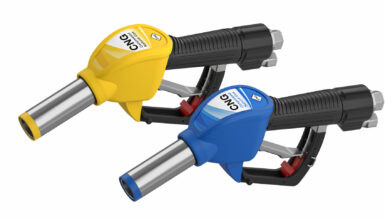Biopharmaceutical manufacturing is fundamentally about delivering life-saving therapies to patients. Over decades, technological advances have significantly improved the quality and accessibility of treatments. Among these, single-use technology stands out as a game-changer. Graeme Proctor explains that single-use technology replaces traditional stainless-steel piping and systems with disposable, ready-to-use components like tube sets. This shift dramatically accelerates the speed to market—a crucial factor exemplified during the COVID-19 pandemic. The rapid global rollout of vaccines was made possible, in part, by single-use systems that allowed manufacturers to quickly scale up production. Angela Mattes highlights how this technology not only speeds delivery but also enhances flexibility and contamination control. “Manufacturers can rapidly switch processes and scale production up or out, which is essential for personalized therapies and vaccines alike,” she notes. This agility is vital in today’s fast-paced healthcare environment, where time can be critical.
While vaccines and monoclonal antibodies are produced in large-scale bioreactors standardized for mass production, personalized therapies such as cell and gene therapies or mRNA treatments require smaller, highly flexible manufacturing setups. Each batch of product potentially serves may serve a single patient, demanding sterile, closed systems that minimize product loss and ensure safety. Angela emphasizes that many novel therapies originate in academic or early biotech labs and must transition to GMP-compliant commercial production. This progression necessitates adaptable manufacturing solutions that maintain regulatory compliance without sacrificing speed or quality. Graeme summarizes this distinction as “scaling up” for large-volume treatments versus “scaling out” for personalized medicine—a dual challenge that single-use technology is uniquely positioned to meet.
The biopharma industry faces stringent regulatory demands, particularly regarding sterility and contamination control. Single-use assemblies must be designed to meet these high standards, balancing complexity with ease of use. Angela and Graeme discuss the critical importance of material compatibility. Components must withstand extreme conditions—from freezing temperatures of minus 80°C to sterilization heat of up to 130°C—without degrading the product or releasing harmful extractables. Testing for chemical compatibility and physical durability is essential to ensure product integrity throughout the manufacturing process. Pressure limitations are another consideration. Unlike stainless steel systems, polymer-based single-use components have lower maximum pressure thresholds that must align with the requirements of each process step.
Biopharma manufacturing is a meticulous, multi-stage process often spanning months or years—from cell culture development through clinical trials to final fill and packaging. Any disruption at an early stage can be quickly recovered, but errors late in the process can result in costly losses and delays in patient access to critical medicines. Graeme highlights how single-use technology helps mitigate these risks by enabling faster changeovers and reducing downtime, ultimately supporting tighter production timelines without compromising quality.
The final fill—where the drug product is aseptically filled into vials, syringes, or cartridges—is one of the most critical stages in biopharma manufacturing. It demands absolute sterility, precise dosing, and robust system integrity. Parker supports this stage with flexible, closed, single-use system designs that comply with Annex 1 guidelines. These assemblies often include advanced seamless overmolding technology.
Automation plays a pivotal role in ensuring consistent, error-free biopharma manufacturing. Parker offers a range of automated systems—from filtration to bulk fill—that incorporate integrity testing, such as PUPSIT (Pre-Use and Post-Sterilization Integrity Testing). This testing verifies the integrity of single-use assemblies before use. Automation not only improves compliance but also reduces human error, enhancing overall process reliability.
Both Angela and Graeme observe several key trends shaping the future of biopharma: increased demand for advanced therapies like cell and gene therapies and mRNA treatments requiring adaptable manufacturing solutions; decentralized manufacturing through modular and flexible units enabling localized production.
Sustainability is an increasingly important focus. Despite concerns about environmental impact, studies show that single-use systems can reduce overall energy and water consumption compared to traditional stainless-steel setups.
Angela stresses that collaboration among vendors, manufacturers, and regulatory bodies are essential to drive innovation while maintaining safety and quality. “We’re all part of one global ecosystem,” she says. “Working together accelerates progress toward better patient outcomes and a more sustainable future.”
The Expert Insights discussion makes it clear that biopharma processing is about delivering safe, effective medicines that improve lives. Through innovations in single-use technology, automation, and smart manufacturing, companies like Parker Hannifin are helping to bring biopharma processing to life, enabling industry solutions that lead to a better tomorrow. As the industry evolves, these advancements will continue to play a crucial role in meeting the demands of patients, manufacturers, and regulators worldwide.











